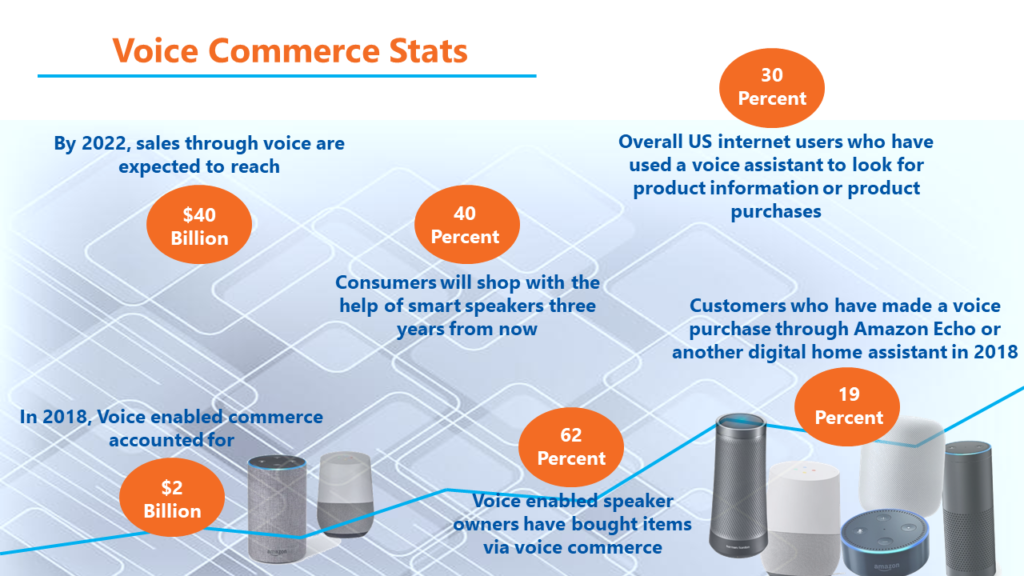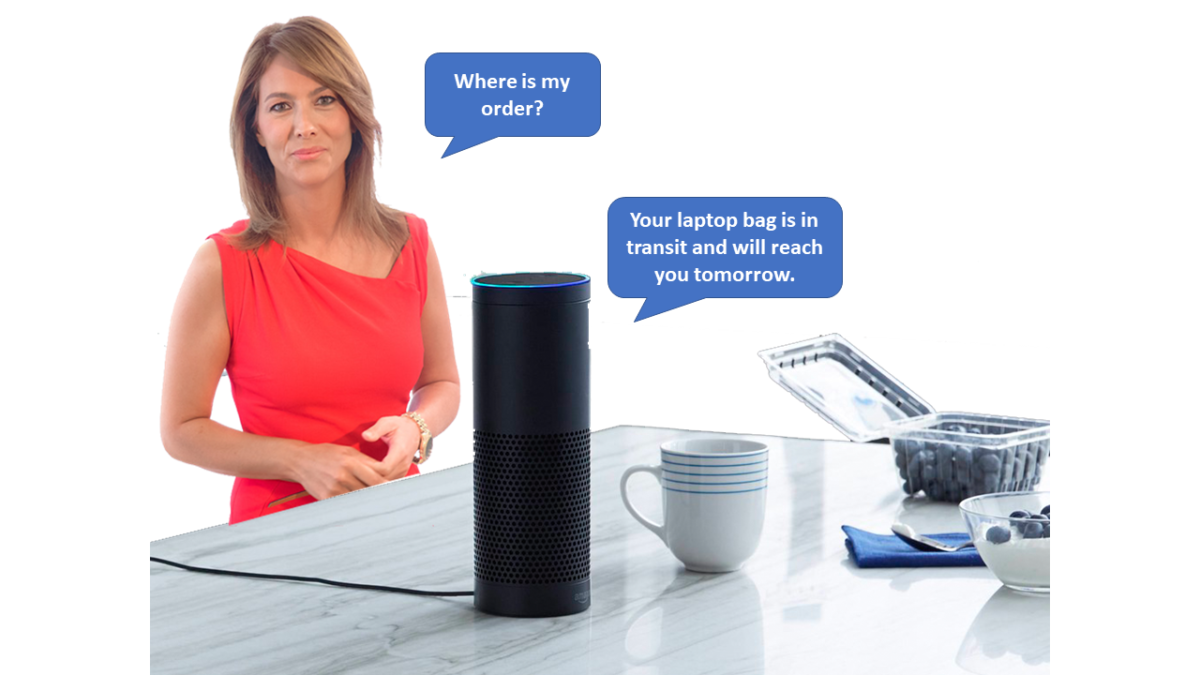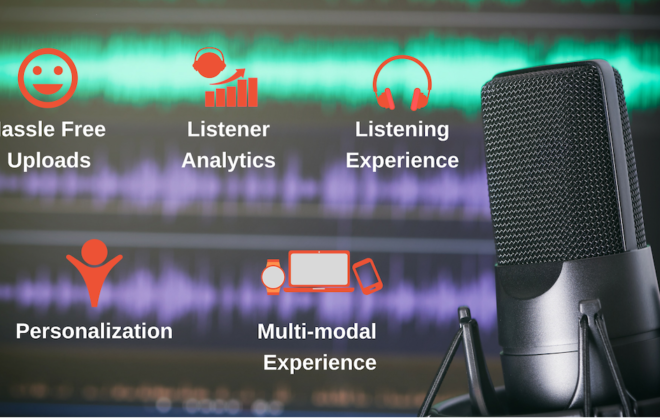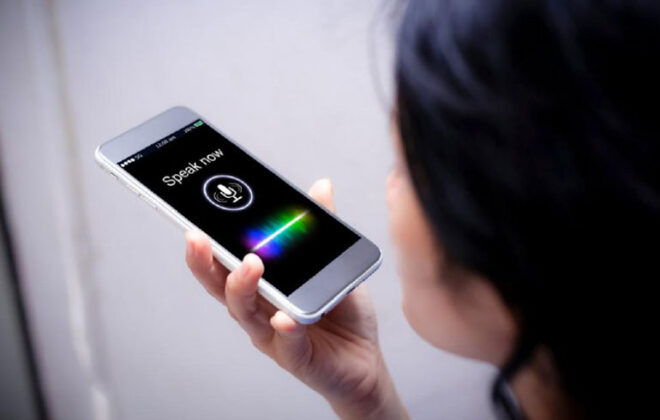Is your e-Commerce store ready for the #VoiceFirst revolution
A technology trend that has spread at an enormous speed in the last couple of years is the growing adoption of voice-enabled devices, especially those powered by voice-assistants like Amazon Alexa and Google Assistant. Today, 26% adults in the US have access to a voice-enabled smart speaker. That number is predicted to rise to 55% by 2022. As per Gartner, 30% of all searches will be done without a screen by as early as 2020, whereas 50% of all searches will be done using voice in the same time period.
Unsurprisingly, big brands across industries are taking notice of this new-age technology. This is proving to be especially important for brands who need to connect closely with their customers and keep them meaningfully engaged. One industry that is expected to see a huge change with this growing adoption of voice-enabled devices is the e-commerce industry.
Do you think Voice Commerce is futuristic? Think again!

Sample these stats:
- Voice enabled commerce accounted for $2 billion in retail sales in 2018. Sales through voice are expected to reach $40 billion by 2022
- Capgemini predicts that three years from now, 40% of consumers will shop with the help of smart speakers, spending 18% of their total shopping budgets in the process
- 19% customers have made a voice purchase through Amazon Echo or another digital home assistant in 2018
- 62% of voice enabled speaker owners have bought items via voice commerce
- 30% of overall US internet users have used a voice assistant to look for product information or product purchases
The above stats clearly show a growing customer preference towards voice-shopping and this trend is only going to go north from here! For voice-based orders, the most popular categories are grocery and house hold items, but other segments like electronics, entertainment, personal care and clothing are catching up fast.
‘Voicifying’ your storefront – Initial Steps
As the trend of voice-shopping grows over the next few years, it is imperative for eCommerce store owners / marketers to start taking those initial steps towards enabling their customers to have meaningful ‘conversations’ with their storefront. We recommend not to take a big-bang approach to “voicification” of your store but rather break it into phases. Before you go ahead with implementation of voice search and ordering, here are the top 3 ideas that you could start with, which we believe should give you the biggest return on your investment:
1. Use Voice to improve Customer Service / Convenience
Did you know that the most common customer inquiries (as high as 70%!!) that come in to the call centres fall under the following 4 categories:
- Getting order status
- Initiate a Return / Exchange
- Reorder
- FAQs
All these categories can be easily built as conversations on voice-enabled devices. Empowering your customers to have such conversations with your storefront has multiple advantages:
- It drastically improves the customer experience (when was the last time anyone enjoyed listening to a customer care IVR?!)
- It makes information and answers available to customers instantaneously
- It reduces the load on call centres
Given these obvious advantages, this is our top pick for where you can begin your storefront ‘voicification’ journey!
2. Push promotions on the voice channel
As per a research, more than 70% users who use voice-enabled devices would like brands to share information on promotions and would love to get discount coupons from their favourite brands on the voice channel. Users also want information on upcoming sales or events being organized by the brand.
Given this data, this channel could be used very effectively for targeted campaigns, leveraging the understanding of preferences / habits of the customer that your brand may be ‘talking to’. In this era of personalization, voice could be your best bet to improve the effectiveness of your marketing campaigns!
3. Personalization using voice-assistants
Google’s findings indicate that users want smart speakers to provide relevant experiences that are personalized to their needs and preferences. This entails capturing data about customer buying habits & purchase preferences and analyzing it effectively. Retailers like Walmart and Target have effectively done this using Google Home speakers to remind customers about reordering household products like detergent and shampoo.
In short, voice channels and voice-assistants bring a new avenue for e-Commerce players to engage with their customers, provide convenience and drive sales. Brands should leverage technology to build a concrete presence on voice channel to get ready for the future of e-Commerce.




